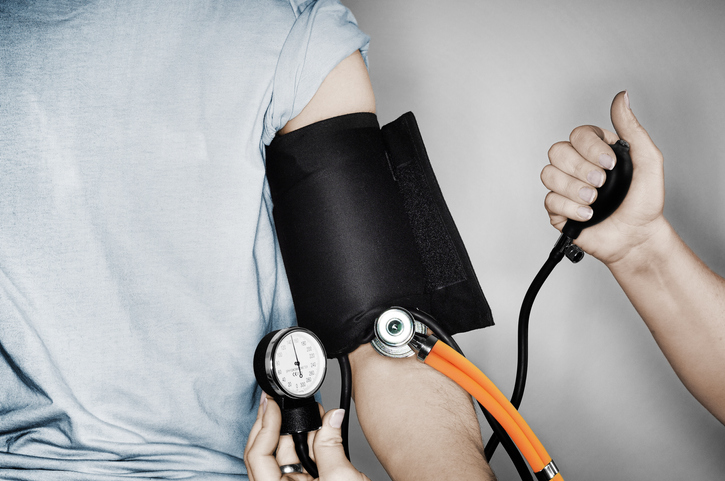 |
| An unstable diastolic blood pressure puts patients at risk for open-angle glaucoma. Photo: Getty Images. |
Intraocular pressure (IOP) is a key risk factor for open-angle glaucoma (OAG) and just about the only aspect of the disease that physicians have some control over. Current research shows that there exists a significant relationship between hypertension and IOP, with several studies showing that an increase in systemic blood pressure is associated with an increase in IOP. Researchers recently noted, however, that several studies also report high blood pressure at a young age having a protective effect against OAG. They conducted a literature review to explore the effect of hypertension on OAG incidence and found that diastolic instability—not just hypertension—increased the risk of OAG.
The literature review included 16 studies with a total sample size of 72,212 that matched eligibility criteria (of 3,711 studies identified by topic keywords). Quantitative meta-analysis demonstrated a risk ratio of 1.69 in the hypertension group as well as increased risk for those with unstable (either low or high) diastolic blood pressure.
“The results of the meta-analysis showed that people with systemic hypertension had a significant 1.71-fold risk of developing glaucoma compared with non-hypertensive people,” the researchers said. According to their subjective funnel plot assessment, they say this finding had minimal publication bias and aligns with a previously published meta-analysis that reported a significant relationship between OAG incidence and systemic hypertension. Additionally, they added, “A meta-analysis assessing the effect of intraocular and blood pressure reported that a 10mm Hg increase in systolic blood pressure resulted in an increase in IOP by 0.26mm Hg; whereas, an increase in diastolic blood pressure by 5mm Hg increased IOP by 0.17mm Hg.” They noted a second meta-analysis found older age and female sex contributed to OAG incidence.
The researchers explained that there are several mechanisms in the relationship between hypertension and glaucoma. “The first is the presence of mechanical stress on the lamina cribrosa as a result of an increase in IOP caused by an increase in the production of aqueous humor by an increase in blood flow in the ciliary body and a decrease in the absorption of aqueous humor due to an increase in episcleral venous pressure,” they said. “Second, autoregulation disorders resulting from an imbalance in endothelin-1 levels. Third, narrowing of the caliber of the central retinal artery due to chronic hypertension, which causes blood flow to the eyes, and fourth, the incidence of atherosclerosis in chronic hypertension, which also results in narrowing of the caliber of the central retinal artery.”
Based on their systemic review, the team concluded that hypertension increases the risk of OAG but that low diastolic blood pressure also increases OAG risk. “There’s a U-shaped effect between diastolic blood pressure and OAG,” they said. They recommend that clinicians pay special attention to hypertensive patients who are at risk for developing OAG.
Nislawati R, Zainal A, Ismail A, et al. Role of hypertension as a risk factor for open-angle glaucoma: a systematic review and meta-analysis. BMJ Open Ophthalmol. September 28, 2021. [Epub ahead of print]. |

